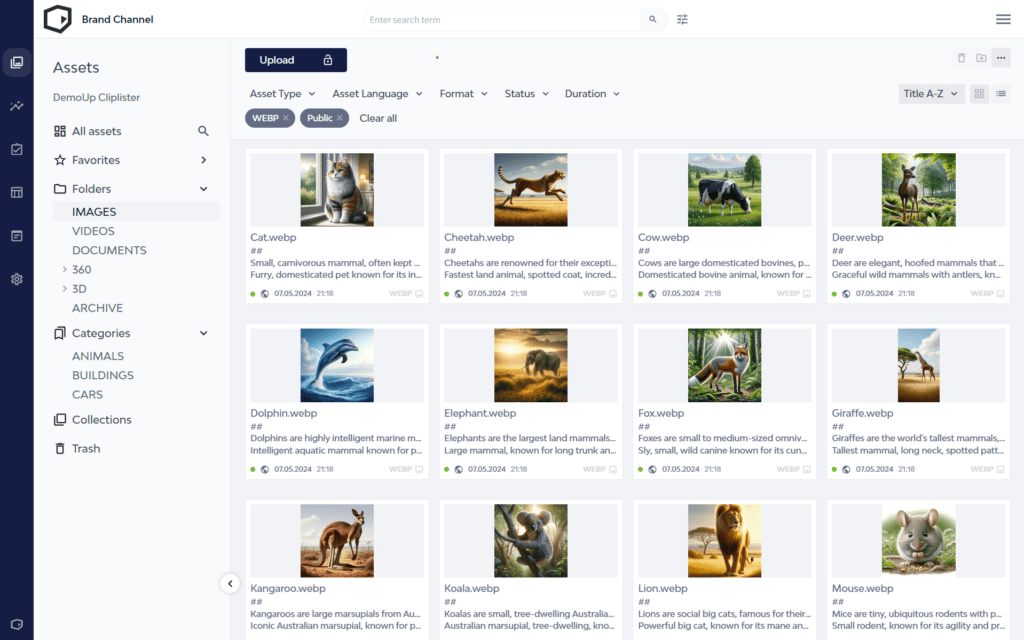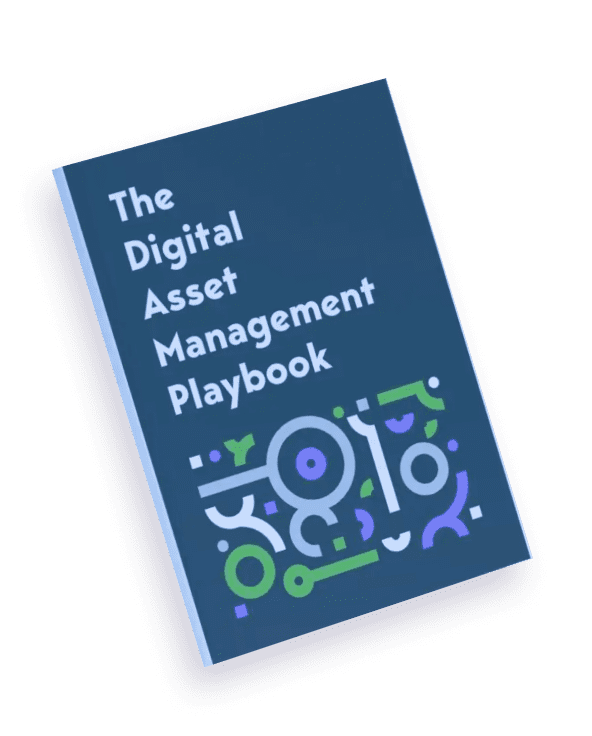If you’re in the marketing world, you’ve surely heard the term digital asset thrown around a few times. But what are digital assets?
The term has many uses across many industries, but the definition is simple: A digital asset is anything stored online that contains value.
The rest of this article explores everything you need to know about digital assets, including definitions, types, and how you can manage them to maximise your marketing efforts.
Digital Asset: Definition and Meaning
A digital asset is anything in digital form that contains value. In marketing, digital assets are usually videos, images, or other files that can be used to generate revenue.
Types of Digital Assets Used in E-Commerce
There are several types of digital assets. Because we create digital asset management software with a strong focus on e-commerce, here are the common digital asset types our clients store:
- Media assets like images and videos
- Product information
- Technical specification sheets
- Brand visuals, like logos
- Design assets, like iconography and packaging design
- Social media content and assets
- Website assets, like site banners and product images
- Email marketing designs, like header images, signatures, and social media links
- Data, such as performance, market, and customer data
- Product data sheets
- Any other file type that contains inherent value to your business
How Digital Assets Enhance Marketing Strategies
Let’s consider how these files can be used to enhance marketing efforts.
Digital assets are the cornerstone of any successful company. They allow you to create successful campaigns, advertise your services, and bring value to your brand.
Use recognisable digital assets, including ones like brand photos, text, images, videos, and audio. Doing so will enhance the brand’s visibility.
The Role of DAM in Managing Digital Assets

DAM (Digital Asset Management) is the system you use to store and manage your assets. A digital asset management system is crucial, as it grants access to your digital asset register quickly and effectively.
You can search, organise, and deploy the stored data and digital assets. Implementing this streamlined process benefits the company.
Organise, Find, and Share
Having tons of assets under your ownership can quickly devolve into a chaotic mess. DAM is ideal if you’re struggling to comb through documents and other media that are considered assets.

Organise these assets across various devices with a digital asset management system. It lets you create streamlined data storage. With this organised data system, you can search for a specific digital asset or file within seconds.
Once you have the file, whether a video, social media image, or another file format, you can share it. DAM lets you publish the media on whichever platform you need.
Security
Other benefits of DAM systems relate to securing your assets. These systems grant access based on authentication methods and have strict access control. They also encrypt the stored data. As such, digital assets are safe behind firewalls and other security measures.

A company’s digital assets are like an extension of its brand and are crucial documents to the owner. Therefore, security is a huge factor to consider when you are looking into a new DAM solution.
Digital Rights Management (DRM)
A DAM system helps you stay on top of licensing and copyright issues by allowing you to set go-live and takedown dates for your digital assets. This ensures assets are not used past their expiration, helping you maintain compliance and prevent legal issues.
Additionally, DRM features in a DAM system reduce the risk of unauthorised use and helps safeguard your brand’s integrity.
Scalability & Growth
All companies have to start somewhere, but the ultimate goal is to grow their operations. Digital asset management that can grow with the company is critical. The value of scalability is that as your company expands its reach, the DAM technology can expand the features it offers you.
Your assets continually grow, requiring better organisation of significant data. Software should always support marketing growth. The software’s technology must be able to handle your data.
Best Practices for Optimising Digital Content
Optimising how you store, manage, and deliver digital marketing content is a fantastic way to drive sales. It also lets you interact more with clients.
After all, what’s the use of an exceptional marketing video if the user it’s intended for never sees it? There are many practices you can complete to optimise your digital content, for example:
- Use descriptive and precise metadata to describe the asset
- Stay consistent with the metadata introduced in your assets
- Uniform definition in metadata ensures clients can find your products
- Tag your asset with the relevant keywords to boost its visibility
- Integrate the best SEO practices, such as using the best file formats and sizes
- Ensure you add alt-text and captions to your assets and metadata
- Leverage original content that exists nowhere else to boost your visibility
- Invest in brand-specific visuals unique to your business
- Create a digital file that’s easily adaptable to multiple platforms
- Track your performance and use regular audits and updates to see what created content is thriving.
The Future of Digital Assets in E-Commerce
Emerging trends in the e-commerce industry will change how businesses view digital assets. For example, searching for a product using visuals is becoming more common.
No one wants to sit in front of their computer or phone and struggle to find the right keywords to locate a product.

Organisations with unique visuals but unified metadata can drive more website traffic. Another emerging trend you should consider is the use of AI personalisation.
Using AI, businesses gain the ability to personalise specific assets. They can also implement more effective marketing campaigns. AI can generate the best metadata for a specific digital asset.
Integrating PIM and DAM solutions is another hot topic within the online retail world. This provides you one holistic system that you can use to manage, find, and publish product content.
Manage Digital Assets at Scale with DemoUp Cliplister
DemoUp Cliplister is a comprehensive DAM that allows organisations to manage your assets dynamically. It provides features to improve asset management. These include Dynamic Image Delivery, Template and Banner Editor, and Product Content Syndication.
Integrate existing workflows and collaborate with team members using permission settings. All data is stored in ISO 27001-certified data centres and complies with EU-GDPR data protection laws.
The best is that DemoUp Cliplister will scale its technology to fit your needs. All pricing is bespoke. This way, you get the necessary tools without paying for unnecessary features. It provides excellent digital asset management that scales with your business.
Frequently Asked Questions
If you still have questions, see the following FAQs to find answers to common queries.
Digital assets are any online files or media that contain value. This can be images, videos, documents, spreadsheets, or anything else that bring value to your business.
Digital assets include videos, audio, images, and online documents unique to your company. In e-commerce, this includes product images, videos, 3D/AR models, product data sheets, and more.
DemoUp Cliplister has dozens of tools that help you store your assets effectively. It supports single or bulk file uploads, cloud storage, video transcoding, and advanced AI search. It’s also scalable for growing your business.
Specialised DAM systems ensure you can organise your assets in an advantageous way for your business. Often, hundreds to thousands of media files and other assets are available. With DAM, you can streamline the organisation, sharing, and storage of these files.
A digital asset management system boosts revenue by improving content efficiency, ensuring brand consistency, and speeding up time-to-market.

















